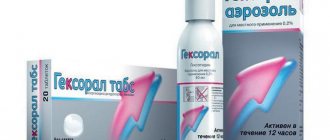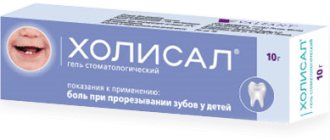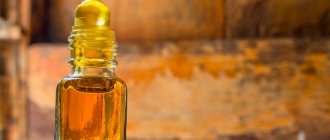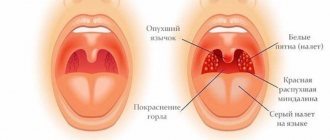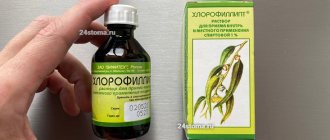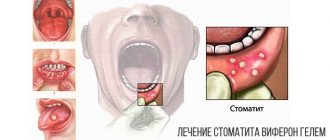The compared medications that are actively used in dentistry are painkillers and anti-inflammatory gels. They are applied directly to the oral mucosa and are safe for use except in cases of allergies. Cholisal and Kamistad are interchangeable treatment options, despite the fact that their composition and some features of use differ. The easiest way would be to consider the pros and cons of using these gels for adults and children.
How does Cholisal help with stomatitis?
Cholisal is a medicine based on anhydrous choline salicylate . It fights not only the symptoms of the disease, but also pathogens .
Stops the synthesis of foci of inflammation, normalizes body temperature , and helps strengthen the gums .
Properties:
- pain reliever;
- antibacterial;
- anti-inflammatory.
Reference! The medicine destroys bacteria , heals wounds , and restores mucosal tissue . Inflammation disappears, the patient recovers.
In addition to the main active ingredient – anhydrous choline salicylate, the ointment contains auxiliary ingredients:
- cetalkonium chloride ;
- ethanol ; _
- glycerol;
- purified water ;
- hydroxyethylcellulose;
- propyloxybenzoate;
- anise oil;
- methyloxybenzoate.
Indications:
- stomatitis;
- candidiasis;
- radiation sickness;
- gum damage, including bleeding .
Contraindications:
- pregnancy;
- lactation;
- individual intolerance ;
- children's age up to 1 year .
Pros and cons of treating a child with ointment
Advantages:
- fast and effective pain relief;
- preservation of medicinal properties when interacting with saliva;
- elimination of the source of the disease;
- It is perfectly absorbed, leaving a thin film that protects painful areas from harmful microorganisms entering them.
Cholisal has one drawback: it causes increased salivation when used, which is explained by the effect of anise oil presented in the composition.
DESCRIPTION OF DRUGS
Cholisal is a transparent jelly-like substance without a distinct taste with a faint aroma of anise. Kalgel is a colorless mass with a gel consistency, a pleasant sweet taste and herbal odor. The drugs have advantages over antiseptic solutions and ointments:
- have an analgesic effect for several hours;
- do not require frequent use;
- During treatment, the baby’s diet is not disrupted.
Applying medications to your baby's gums before bed allows him to sleep peacefully all night without feeling pain or itching. Their use also becomes an excellent prevention of stomatitis by strengthening local immunity.
PHARMACHOLOGIC EFFECT
Medicines exhibit the same activity - analgesic, disinfectant, anti-inflammatory.
They have the ability to destroy bacteria, yeast-like fungi and even some viruses. The drugs effectively relieve swelling by improving microcirculation in inflamed areas. But the mechanisms of such an effect differ somewhat between gels:
- Holisal. Blocks cyclooxygenase, prevents the penetration of neutrophils and macrophages into inflammatory foci. Shows antimicrobial and antibacterial activity. Reduces the sensitivity of nerve endings, eliminating pain;
- Kalgel. Blocks sodium channels, which causes inhibition of nerve conduction. Prevents the active growth and reproduction of pathogenic microorganisms due to its antiseptic effect. Cools gums, instantly reducing pain and itching.
Dental gels improve blood circulation in tissues affected by inflammation. The supply of oxygen, nutrients and biologically active substances to the cells increases. By accelerating metabolic processes, damaged tissues heal quickly.
COMPOSITION AND FORM OF RELEASE
Gels for treating gums are completely different in the composition of active and auxiliary ingredients. The active ingredients of Cholisal are choline salicylate, cetalkonium chloride, Kalgel - lidocaine hydrochloride and cetylpyridinium chloride. Dental preparations contain auxiliary components. They are necessary both to form the gel base and to ensure maximum absorption. What is the difference between Kalgel (365 rubles) and Kholisal (375 rubles) in composition:
- Cholisal: methyl parahydroxybenzoate, glycerin, hyethellose, propyl parahydroxybenzoate, ethyl alcohol, distilled water, anise oil;
- Kalgel: sorbitol, ethanol, hyaetellose, macrogol, sodium saccharinate and citrate, xylitol, glycerin, levomenthol, citric acid, caramel and herbal flavors, water.
The drugs are produced in aluminum tubes, packaged in 10.0 g units. Secondary packaging is cardboard boxes with attached instructions for use.
Which is better, Holisal, Kamistad or Solcoseryl?
In the treatment of stomatitis, its analogue - Kamistad . Its advantages:
- excellent analgesic effect ;
- adheres well ;
- fights inflammation, ulcers.
The downside of Kamistad is its weak antimicrobial effect , which is explained by the presence of tsetalkonium chloride in the composition. To destroy harmful bacteria, you will need to use an additional drug.
Photo 1. A well-known analogue of Cholisal is Kamistad gel for topical use, manufactured by STADA, in a 10 g tube.
The second known analogue of Cholisal is Solcoseryl . Benefits: Effective wound healing, fights harmful bacteria, easy to use. The disadvantage is the inability to use the drug during pregnancy and breastfeeding.
Important! Of the three drugs against stomatitis, Cholisal stands out because it has more benefits . The product is superior to analogues in efficiency and speed of tissue healing. Able to fight inflammation and bacteria, has a complex effect.
Instructions for use of the gel for children and adults
- wash your hands thoroughly ;
- squeeze out 0.5 cm of gel;
- Apply to the affected areas, gently spreading over the tissues.
- wash hands;
- squeeze out 1 cm of gel;
- applied to the damaged area.
Attention! Use the medicine 2 times a day after eating. Only the doctor increases the dosage after examining the child.
Use the drug after meals 3 times a day .
Differences in indications and use
Both dental gels are used to relieve inflammation and reduce pain in damaged oral mucosa (stomatitis, periodontitis, gingivitis). Comistad - a German-made gel exhibits a better analgesic effect, Cholisal has a more pronounced antiseptic and anti-inflammatory effect (produced in Poland and Russia), is indicated for a wider range of problems with the oral mucosa, in which its competitor is not used, namely:
- candidiasis (“thrush” of the mouth),
- lichen planus (itchy dermatosis localized in the mouth),
- Stevens-Johnson syndrome (not as a primary, but as an auxiliary remedy).
Types of stomatitis in children
Depending on the cause that caused the inflammation of the oral mucosa, the following types of stomatitis are distinguished.
Viral.
This type of stomatitis occurs most often. The virus is transmitted by airborne droplets, through toys, dishes, and household items. At first, the disease is often confused with a cold: the child becomes lethargic, the temperature may rise, a runny nose and cough may appear. Moreover, viral stomatitis often occurs against the background of various acute respiratory viral infections, for example, influenza, measles, chickenpox. Around the second day, aphthae begin to appear on the gums, inside of the cheeks, tongue or lips - small round ulcers of a light yellow hue with a bright red border. That is why such stomatitis is also called aphthous or ulcerative.
Bacterial.
This stomatitis often accompanies tonsillitis, sinusitis, and pneumonia. It can be recognized by the formation of a thick yellow crust on the lips, which tightens the red border, preventing the child from opening his mouth wide. Bacterial stomatitis often occurs as a result of decreased immunity and may be accompanied by an increase in temperature.
Traumatic.
Such stomatitis is caused by mechanical injuries to the oral mucosa, for example, biting the inside of the cheek or lips, burns from hot food, the habit of gnawing hard objects, etc.
Candida.
This stomatitis most often occurs in infants. The cause of its appearance is a fungus of the genus Candida. The fact is that breast milk, which remains in the baby’s mouth, is a favorable environment for the proliferation of this microorganism. Such stomatitis can be suspected by a persistent white cheesy coating in the oral cavity, under which red irritated tissue is hidden.
Difference in composition and action
The main difference in the composition of the compared drugs, which you should pay attention to first of all, is the presence of lidocaine
in Kamistad for adults.
In dentistry, it is used in local anesthesia, but this is not done too often or without prior testing (first application in a small amount). The main soothing active ingredient is a completely harmless chamomile
. In addition to lidocaine, formic acid can also be found in the medicine, albeit as just an auxiliary element. Due to its fast and fairly strong anesthetic effect, Kamistad may be a more suitable option for severe pain.
Despite the fact that Cholisal does not contain lidocaine, it also relieves pain quite effectively. The main active ingredients are cetalkonium chloride
and
choline salicylate
anhydrous. The first component disinfects the surface of the mucous membrane (antiseptic effect), the second has an analgesic and “calming” effect on irritation (anti-inflammatory effect). Among the ingredients that distinguish it from its rival, which are worth paying special attention to, are anise oil and ethyl alcohol. Although the oil is only an auxiliary substance, the amount of which is small, its presence is still important for people with allergies (the same goes for chamomile extract in the opponent).
In the Cholisal line there is also a variant of Cholisal Dental, produced in one and a half times larger volume (15 g). It contains peppermint oil and propylene glycol. It is indicated not only for inflammation and infectious infections, characterized by irritation and swelling of the oral mucosa, but also in the case of ulcerative and purulent processes. Does not contain sugar. Otherwise, the composition does not differ from regular Kholisal. In general, this option is preferable if you choose what is best for stomatitis.
Gels are applied 2-3 times a day before meals (if it hurts to chew) or after (after rinsing your mouth), as well as before bed.
The difference in shelf life is almost double - Kholisal has a shelf life of 3 years, Kamistad 5 years (although tubes of 10-15 g are unlikely to last that long). Both should be kept away from heat sources and not exposed to sunlight.
Neither one nor the other gel should be cooled or even frozen, even if you want to enhance the analgesic effect with coolness - this will negatively affect the effectiveness of the components.
What to choose?
The decision which is better - Cholisal or Kamistad, primarily depends on the purpose and degree of pain. When teething, children's forms of both are suitable; Kamistad's composition is more “natural” in this regard, the main thing is to make sure that the child is not allergic to chamomile.
For adults with inflammatory processes in the oral cavity, it is better to choose Cholisal (regular or Dental), since its composition is more focused on disinfecting and relieving inflammation.
Comparison of the effectiveness of Kamistad and Kholisal
The effectiveness of Kamistad is quite similar to Cholisal - this means that the ability of the drug substance to provide the maximum possible effect is similar.
For example, if the therapeutic effect of Kamistad is more pronounced, then using Cholisal even in large doses will not achieve this effect.
Also, the speed of therapy - an indicator of the speed of therapeutic action - is approximately the same for Kamistad and Kholisal. And bioavailability, that is, the amount of a drug reaching its site of action in the body, is similar. The higher the bioavailability, the less it will be lost during absorption and use by the body.
Indications for use
Cholisal gel was shown to patients who suffer from pain in the oral cavity caused by subcutaneous inflammation and external damage to the gums.
Effective in the following cases:
- Injuries to the gums and oral cavity;
- Damage to the mucous membrane as a result of incorrectly selected dentures;
- Lichen planus and oral candidiasis;
- Cheilitis, gingivitis, periodontitis;
- Postoperative therapy;
- Pain during eruption of molars.
Cholisal gel can be used either separately or as part of general therapy.
With complex treatment, the drug enhances the effect of antipyretic and antiseptic.
It is also acceptable to use it as a compress on the affected area no more than 3 times a day.
Comparison of safety of Kamistad and Kholisal
The safety of a drug includes many factors.
At the same time, Kamistad’s is higher than Kholisal’s. It is important where the drug is metabolized: drugs are excreted from the body either unchanged or in the form of products of their biochemical transformations. Metabolism occurs spontaneously, but most often involves major organs such as the liver, kidneys, lungs, skin, brain and others. When assessing metabolism in Kamistad, as well as in Cholisal, we look at which organ is the metabolizing organ and how critical the effect on it is.
The risk-benefit ratio is when the prescription of a drug is undesirable, but justified under certain conditions and circumstances, with the obligatory observance of caution in use. At the same time, Kamistad has fewer risks when used than Cholisal.
Also, when calculating safety, it is taken into account whether only allergic reactions occur or possible dysfunction of the main organs. In other matters, as well as the reversibility of the consequences of using Kamistad and Kholisal.
Contraindications
Cholisal gel has virtually no contraindications.
No cases of negative effects on the body have been recorded.
The following groups should use the drug with caution:
- Pregnant patients;
- Women during lactation;
- Children under 12 months;
- People allergic to acids.
As a rule, the application of the gel in cases of increased risk occurs under the supervision of a doctor, or a drug with other active ingredients is prescribed.
Read about how to properly treat inflammation of the tonsils in another informative article on our website.
You can find out all about silvering baby teeth here. There you will also find information about alternative options.
Have you suddenly noticed that your teeth are loose? Do not hesitate to take action, read here what needs to be done in this case.
Comparison of side effects of Kamistad and Cholisal
Side effects or adverse events are any adverse medical event that occurs in a subject after administration of a drug.
Kamistad's rate of adverse events is almost the same as that of Cholisal. They both have few side effects. This implies that the frequency of their occurrence is low, that is, the indicator of how many cases of an undesirable effect of treatment are possible and registered is low. The undesirable effect on the body, the strength of influence and the toxic effect of Kamistad are similar to Cholisal: how quickly the body recovers after taking it and whether it recovers at all.
Cholisal gel: analogues of the active substance
Complete analogues of Cholisal gel in terms of active ingredients are Mundizal and Holicet.
There are also other drugs with choline satylate, however, they are aimed at combating ear diseases (Brotinum, Otinum, Holikaps) and neuralgia of bone tissue (Sachol).
Brotinum, Otinum and Holikaps
The active ingredient is choline sacylate.
The drugs also lower fever, fight viruses and reduce pain, but are available in the form of drops.
The liquid substance is convenient for instillation into the ear canals.
However, Otinum, Holikaps and Brotinum are used as cheap analogues of Cholisal gel.
Otinum price – from 120 rubles.
Brotinum price – from 130 rubles.
The price of Holikaps is from 210 rubles.
Drops are used as a wet compress on the affected area 3-4 times a day.
Doctors, in turn, recommend resorting to drugs that do not contain citalkonium chloride, extremely rarely, if it is not possible to purchase Holicet or Mundizal.
Mundizal and Holicet
They are the most complete analogues of Cholisal gel both in composition and form of application.
- Choline satylate;
- Cetalkonium chloride.
Unlike the expensive analogue, they do not contain methylparaben and hydroxyethylcellulose, due to which their cost is lower. Mundizal burns more strongly than Holicet due to the lack of glycerin compounds in the composition.
The price of Mundizal is from 260 rubles.
The price of Holicet is from 280 rubles.
These gels are used more often than Cholisal - 3-4 times a day, since the effect of the anesthetic component lasts for 6-7 hours.
What is better: Cholisal or Kamistad
Many mothers use Kamistad gel during teething in children, but for adults this drug also provides invaluable benefits. Using Kamistad gum gel you can significantly reduce pain in most dental diseases and even completely get rid of some of them.
Composition of Kamistad gel
Dental gel Kamistad is valuable primarily for its analgesic, anti-inflammatory and disinfecting properties. A similar effect is ensured by the complex effect of the drug components:
- lidocaine hydrochloride (lidocaine);
- chamomile flower extract;
- benzalkonium chloride solution;
- camphor cinnamon oil;
- sodium saccharinate;
- carbomer;
- trometamol;
- formic acid;
- ethanol;
- water.
The analgesic properties of the drug are achieved due to the influence of lidocaine on the membranes of neurons, thereby reducing the penetration of sodium ions through it. Simply put, this component of Kamistad prevents the passage of the pain impulse, and we do not feel pain. This substance does not have medicinal properties. Chamomile extract is responsible for relieving puffiness, reducing inflammation and accelerating tissue regeneration. The antiseptic effect is achieved through alcohol, formic acid, benzalkonium chloride and camphor cinnamon oil. The latter component also provides the product with a pleasant smell and taste. Sodium saccharinate is also used for sweetener purposes. The remaining components are responsible for the consistency of the product, ease of use and shelf life.
Comparison of ease of use of Kamistad and Cholisal
This includes dose selection taking into account various conditions and frequency of doses. At the same time, it is important not to forget about the release form of the drug; it is also important to take it into account when making an assessment.
The ease of use of Kamistad is approximately the same as Cholisal. However, they are not convenient enough to use.
The drug ratings were compiled by experienced pharmacists who studied international research. The report is generated automatically.
Last update date: 2020-12-04 13:45:20


